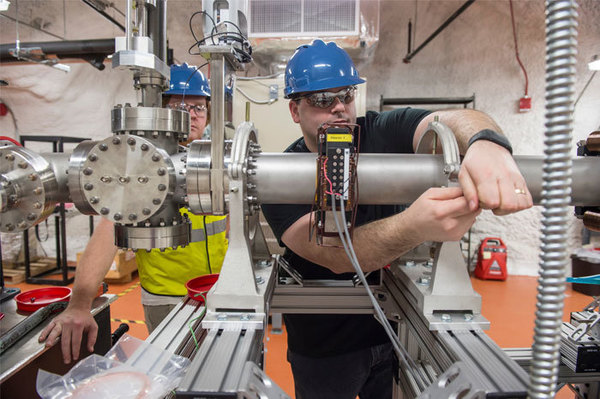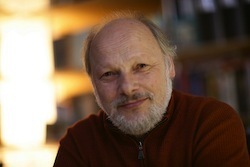
Physics professors Michael Wiescher and Dan Robertson both received a Media Legends Award from the Office of Media Relations for their work with the press that spotlighted academic excellence at the University of Notre Dame.
 Michael Wiescher
Michael Wiescher
Wiescher, the Freimann Professor of Nuclear Physics, and Robertson, an assistant research professor, received their awards during the annual Notre Dame Media Legends Awards Ceremony. They garnered significant media attention with their work on the Compact Accelerator System for Performing Astrophysical Research (CASPAR). CASPAR allows researchers to simulate nuclear fusion processes responsible for energy generation and elemental production in stars, which will provide a greater understanding of how the elements have been created in the universe. Located at the Sanford Underground Research Facility (SURF) in Lead, S.D., CASPAR is one of only two underground low-energy particle accelerators in the world. The other is located in Italy.
 Daniel Robertson
Daniel Robertson
CASPAR was featured in Wired and Scientific American magazines. “Of course the first priority is to get our work out into the public eye and tell our story, but with the help of the University and its networks, it has been amazing to be able to reach out to such well-known publications,” Robertson said. “Being able to reach such a wide and interested audience has generated considerable interest in our work, and I hope helps the general public as a whole understand some of the crazy and yet amazing things we are trying to understand.
During their time in South Dakota, Wiescher and Robertson readily made themselves available to a freelance reporter and Notre Dame’s Media Relations team, sharing their research and answering several questions about CASPAR.
Wiescher feels honored to have been given the award, and to have had significant media attention surrounding CASPAR. “I do feel pretty good about it, in particular since we had a good time with the media project. CASPAR is an entirely new project on the U.S. nuclear physics scene; each project is an uphill battle and needs PR promotion. So timing is perfect,” Wiescher said.
Robertson also appreciated being recognized, for several notable reasons. “To help understand the production of elements in the Universe, we find ourselves working a mile underground in the Black Hills of South Dakota, and you tend to get very focused on the work,” he said. “With projects like these, it is very difficult to include the public and relay the importance and uniqueness of the research you are doing, but it is essential. Community engagement and education is a significant part of the work we try to do at CASPAR, and so to be recognized with this award is an amazing endorsement of the hard work and dedication of my team.”